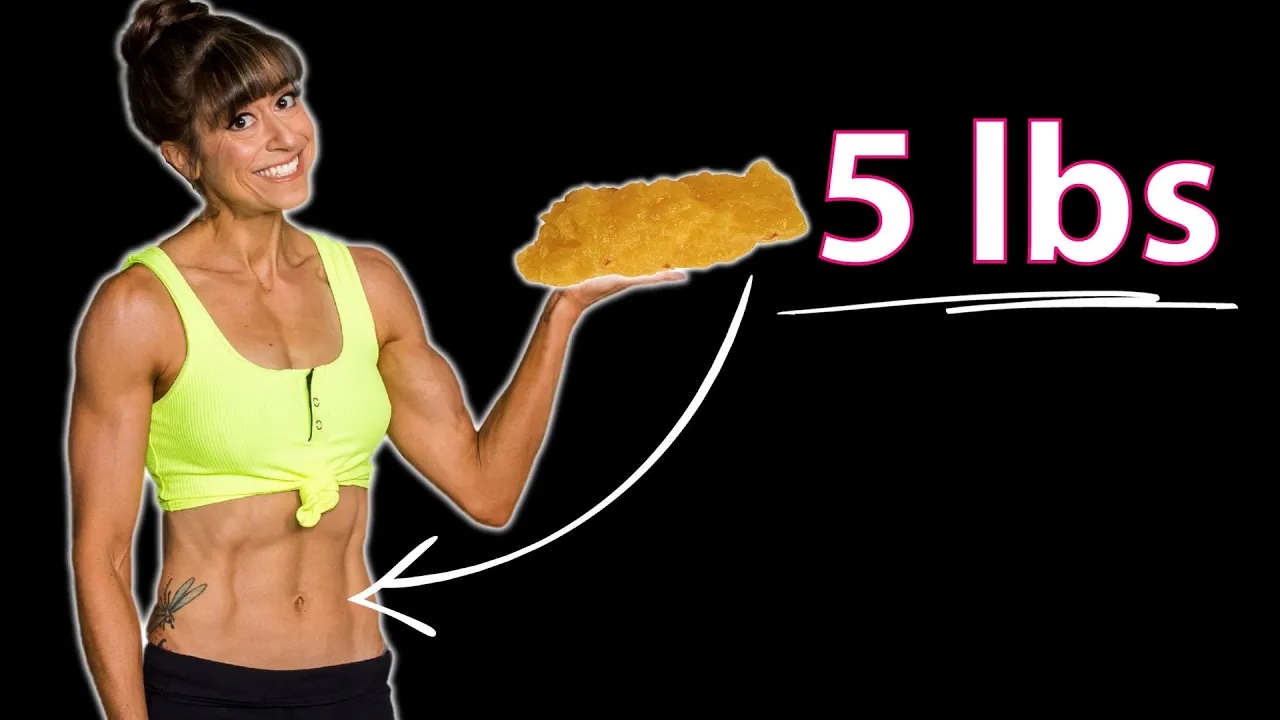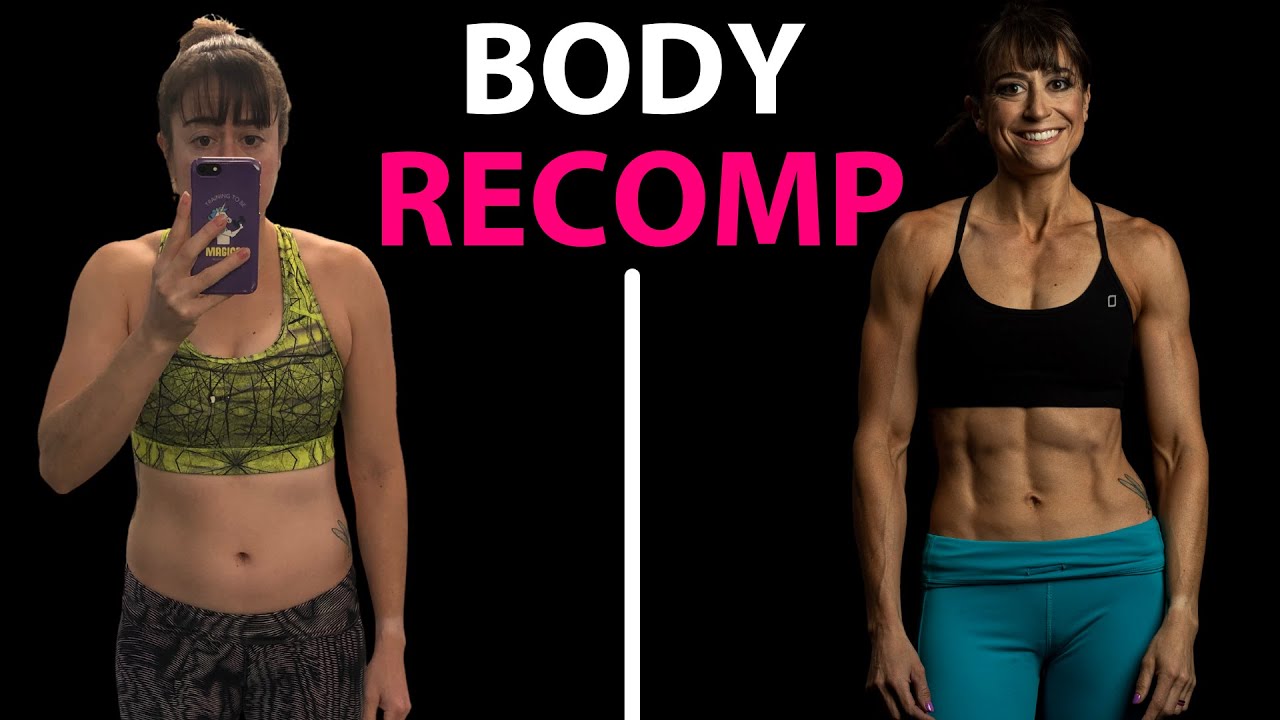
How to ACTUALLY Lose Stubborn Belly Fat (7 Tips)
“You don’t even have any belly fat!”
I got that comment on a post I had with tips to help clients lose that oh so stubborn belly fat.
My reply back…
“You’re right. I don’t!
I have the ab definition I want BECAUSE I followed these tips.
I was surprised by that comment on the post about how to get rid of belly fat because I’m legitimately proof that those tips work!
They’re how I got the ab definition I wanted myself!
Because I know how frustrating it can be to see everywhere else lose fat but that stubborn belly fat not shift no matter what you seem to do, I wanted to share what I implemented to finally see results.
And the tips that have helped my clients see results no matter their age.

It’s essential you first recognize that you can’t just set and forget your habits.
There is no one perfect plan that works forever.
And as you progress toward your goals, what you will need will CHANGE.
That’s why you need to focus on 3 main things to constantly tweak and adjust.
#1: Cycle macros every 2-3 weeks.
By cycling macros every few weeks, you allow yourself to get consistent with a ratio but also allow yourself to adjust macros to build upon previous ratios.
You can use a lower carb cycle to deplete your glycogen stores and potentially better help mobilize fat to be burned as fuel.
You can then use higher protein to help you focus on building and retaining lean muscle to improve your metabolic health even as you lose fat.
Then you can even go a bit higher carb to push harder in your workouts and see the whoosh effect happen.
Sometimes after a lower carb cycle, our fat cells with store water, making us look softer.
Adding back in carbs can help us release that stored water!
But these cycles help us adjust our energy source while capitalizing on the different benefits each macro can provide without overcomplicating things with daily changes that can impact our energy levels!
#2: Include Diet Breaks AND Mini Cuts.
Your body, and even your mind, will fight the fat loss process, especially the leaner you get.
It’s why we want to include diet breaks.
Diet breaks are when you increase your calories to maintenance and even potentially include foods you may have cut out or are craving for about 10-14 days.
It is both a mental break from being in a deficit and driving toward a goal, but also a physical one.
It’s often essential to help us avoid getting burned out while pushing to reach a new level of leanness.
It can help you avoid metabolic adaptations and push harder in your training to build muscle.
It can even help you maintain hormonal balance after an extended weight loss phase.
A diet break may seem like it isn’t moving you forward, but it ultimately does allow you to see better results once you go back to your fat loss focus.
And after a dieting break, you may even consider a mini cut.
A mini cut is an extra intensive, about 2 week period, where you create a more extreme short term deficit and use a more intense macro breakdown to accelerate fat loss.
You don’t do this long-term. It’s just a short term push.
It’s great when you’ve hit that plateau or dead zone to help you bust through and keep going. But it is best used after a higher calorie period.
These cycles within your fat loss journey are essential to long-term results and truly getting off that stubborn fat!
#3: Assess lifestyle changes to address them in your diet and exercise planning.
So often we only work toward goals when times are ideal, when we are super motivated.
But that’s why changes never add up.
We need to find ways to do the habits that build results even when times aren’t perfect…when we’re busy, stressed or tired.
That’s why we need to constantly assess our lifestyle and plan for it.
If you’re busy at work and your usual 6 day a week training schedule is impossible to be consistent with?
Design for 3 days so you get in that great training frequency and volume.
If you can’t meal prep like you had been?
Find frozen meal prep you can easily use or even restaurants that you can eat out at in a pinch.
But assess what you need right now to stay consistent over pressuring yourself into some “ideal” that you can’t maintain so ultimately completely fall off of.
When we aren’t realistic about what we need now, we ultimately sabotage our own consistency and ability to move forward.
So if you want to lose that belly fat, you need to make sure you’re finding ways to move forward even as your lifestyle changes!
Then you need to be consistent past the point you want to quit.
Often with these stubborn areas we will lose fat from everywhere else FIRST.
And only once fat has been lost from those other areas will we begin to see the progress we want.
It can literally feel like nothing is happening at times. We’re in a dead zone. And it can feel like our love handles or belly even look WORSE as we lose.
This doesn’t mean do more to see results.
It means giving our systems more TIME to work their magic.
Too often it isn’t more “tactics” we need but more TIME.
And if we instead try to cut our calories lower or train harder to rush things, we end up actually seeing our results slow further or even completely stall.
So stop thinking you can out do time!
Instead focus on these 2 things…
#1: Create DAILY consistency in macros and calories.
We get good at, and see results from, what we consistently do.
Too often we have our macros up and down, calories higher and lower…and while it may average out over the week, we aren’t really hitting any numbers truly consistently to know what works.
When we are all over the place each week, it makes it hard to truly make changes that snowball.
Even if you hit your macros averaged out over the week, if there were huge swings day to day, you may find your energy isn’t consistent.
Or you feel bloated.
Or your workouts suffer.
But you won’t know WHY.
It could have been the macro breakdown.
Or it could have been too many calories one day and not enough on another.
It could have been your meal timing. Or the types of carbs you included.
That’s why you want to focus on daily consistency to see what works and to fuel yourself in a way that makes you feel GOOD.
Only once we’ve truly hit our macros and calories for about 10-14 days can we know if that works for us!
Constant variation doesn’t allow for those systems to add up!
#2: Have a clear workout progression focused on a PERFORMANCE goal.
The more ways we measure success, the more ways we are successful.
If you want to have extra incentive to do the healthy habits that lead to those aesthetic changes, you need to see other ways that those habits pay off.
That’s why setting a performance goal for your workouts is so key.
Direction drives us.
So having a clear goal for your training pushes you to train harder and with PURPOSE.
You don’t want to miss your workout because you want to be accomplishing a specific goal tied to your training.
You also stop just seeing your workouts as a chance to burn more calories.
It keeps us from just doing wasted volume or simply training for longer.
It keeps us intentional.
When you have that clear focus for your workouts, you not only see your performance improve but you’ll also find that fat loss happens faster because you’re staying more consistent with the healthy habits you need.
And then finally…You’ve got to be willing to embrace the suck.
There is never balance in life…it is a constant balancing act.
And sometimes if you want a goal, you have to be willing to make more sacrifices than you normally would.
Once you reach that goal, you will often find you can create a new balance over time.
But we do have to embrace more challenges, make more sacrifices and own the HARD a bit more in pursuit of a goal we haven’t achieved before or haven’t had in awhile.
It’s not EASY to push those limits
That’s why you need to do two things to embrace the suck…
#1: Assess past struggles.
When we fail, when something didn’t work, we want to move on from it and forget about it as fast as possible.
But if we don’t pause to assess what happened, often we keep repeating the same mistakes disguised as a new program.
We keep forcing unrealistic habits or expectations on ourselves.
So as you start to make changes, reflect on what has held you back in the past to see how you can plan for those challenges or even avoid them.
Assess how you will find ways to stay consistent through the hard and make it even feel more manageable just because you’ve recognized it is there.
Instead of downplaying the challenges, OWN THEM.
It helps us think, “Well that wasn’t so bad” when we encounter them which can allow us to keep moving forward and seeing that fat loss occur!
#2: Focus on the habit build.
Discipline is the secret to success. But discipline isn’t just something we are born with.
It is built.
And it is built by us creating habits that become so natural, we can repeat them even when we don’t seem to be motivated or have the willpower.
Yet so often we make diet and exercise changes in a way that overwhelms us and depletes our motivation quickly.
We make ourselves do a million and one things we aren’t comfortable with while cutting out most of the things we love.
So while we do need to recognize there will be challenges and sacrifices we have to make, the easier we can make the changes to start, the more we create that discipline with those habits right away.
And then the more we can build off of those fundamentals without sabotaging ourselves.
If you’re feeling overwhelmed with trying to lose that stubborn fat, focus on one thing you can easily do to start that build.
That will help you then stack more habits slowly on top without feeling like it is so all or nothing.
Then when life does get in the way it will be easier to keep doing the habits you need even during a stressful or hard time.
But focus on the habit build over having that all or nothing attitude toward change!
If you’re struggling to lose belly fat, focus on these key tips.
And just remember, as you move forward toward your goals, what you need WILL change.
There will be hard situations and challenges along the way.
But by embracing that you can’t out exercise or out diet time, you can help yourself create habits you can truly be consistent and disciplined with!
Ready to create the sustainable balance you need in your diet and workouts to see the results you deserve?



